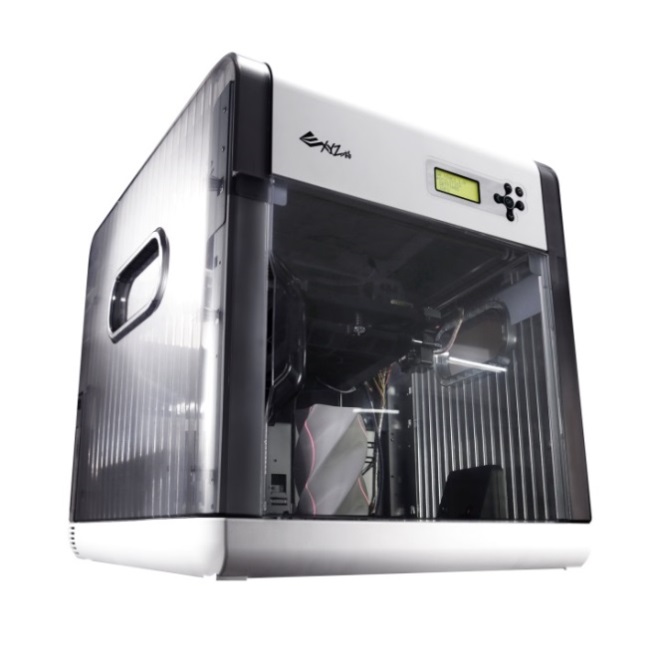Companies have been banking on 3D printers someday becoming an everyday household accessory, but XYZprinting just jetted it closer to reality. The Taiwanese company today announced that its Da Vinci 1.0 all-in-one printer plus scanner is shipping to the US for $799, making it the world’s first and most affordable 3D printer and scanner.
The 3D printer resembles a large microwave, weighing somewhere between 40-50 pounds, and can take anywhere from a few minutes to a few hours to scan objects, depending on their size. The company even offers free software: one to scan the object and another to adjust size and color, then print it.
The Da Vinci 1.0 all-in-one follows the single-nozzle Da Vinci 1.0, which had made its debut at CES 2014, and the dual nozzle Da Vinci 2.0, both of which are marked at $499 and $649 respectively.
Simon Shen, CEO of XYZprinting, said it took him two years for his vision of an affordable 3D printer for consumers and small-to-medium businesses to come to realization.
“3D printing has amazing potential and the possibilities are just beginning to be realized,” said Shen, who added that children in Taiwan are already playing with 3D printing and learning it in summer camps.
While most manufacturers focus on China as their main base location, XYZprinting is different. “We have some operations in China, but we focus on Thailand and Philippines,” said Shen. “We are highly integrated and self-sufficient to cater to clients if they want to shop products to the Americas because we can easily ship them from locations like Brazil and Mexico.”
The company has a strong foothold in due part thanks to its parent company, New Kinpo Group, which reported earning $30 billion in revenue annually.
XYZprinting has worldwide operations, including in the US, China and Taiwan, but is mainly focusing on production in Thailand and the Philippines. Expect the company to first expand in the US, Europe, and Japan, where the markets are more mature, says Shen.


